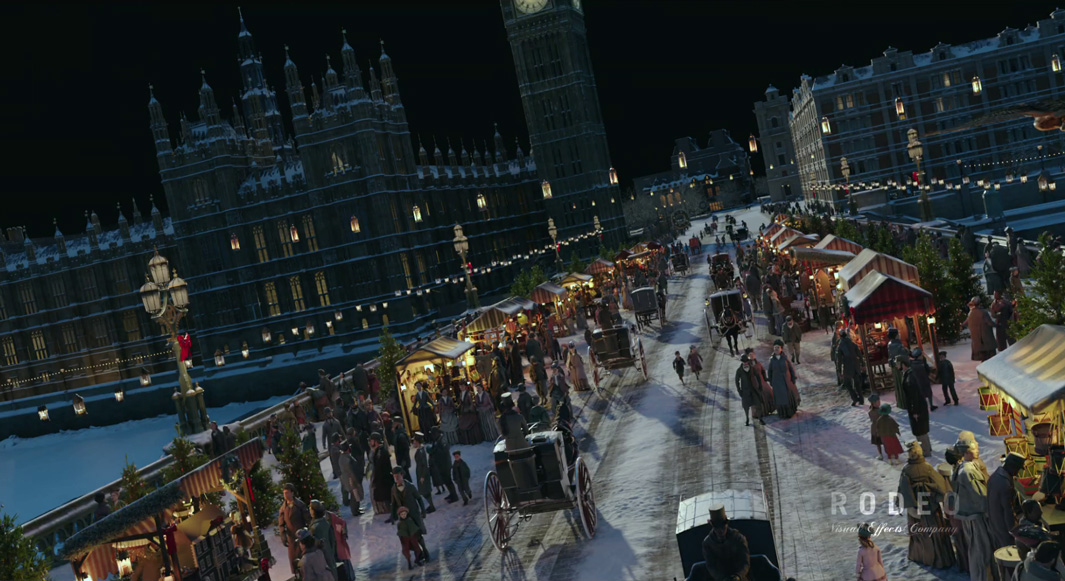Rodeo FX populates The Nutcracker ouverture with Golaem!
Disney's The Nutcracker, Rodeo FX created a 1 min 20 sec long, full CG, opening sequence which makes us fly over a Victorian London populated using Golaem with many ambient characters including cloth simulation.
Can you present yourself and the studio?
My name is David Raymond, lead crowd artist at Rodeo FX.
What was the size of your team and how long have you worked on this project?
Two of us worked on crowds for this project over several months. (ed: the second artist was Marie-Soleil Chabot)
Can you describe the shot you did for Nutcracker?
We used Golaem in 2 shots in The Nutcracker and the Four Realms: the opening sequence and an establishing shot of a Christmas market.
The opening sequence was the main focus of Rodeo FX’s work on this film. It is a 1,300-frame, full CG, stereo-rendered shot flying over Victorian era London. Every single character in the shot was processed through Golaem at different levels. Some characters required specific movements that were hand-animated then ingested in Golaem for cloth simulation through Apex system, but the vast majority of characters were pure crowd simulation.
To make the scene management easier, the vast London digital set was split into several sections and worked separately. Once approved, the generated crowd was delivered to lighting department via our in-house publishing pipeline that connected to the Katana plugin of Golaem. The use of the Katana plugin simplified significantly the management of such complex animation, keeping file sizes quite low.
How many characters are there in the shot? How close are they from the camera?
We created 2,625 characters total in the opening sequence, all having at least 1 Apex cloth component uniquely simulated based on their animation. The distance from camera varies from a couple of meters in the foreground to a far background.
Could you give a bit of details about the challenges or feature used in the shot?
Given the complexity of the shot, I can confidently say that we used every single component of Golaem to achieve the final result. At the early stages of production, some components like the Katana plugin had not been released and we used them in their beta stage.
The most challenging part was certainly the Apex cloth simulation. It was brand new, I believe, for Golaem. It took quite a bit of testing to commit to the solution. But once in place, it was very easy to do the base sim without, and just activate it on the final pass once everything else was approved.
Did you have to integrate FX with Golaem characters? What was your workflow?
Yes, we did. We simulated footprints of the characters in the snow by exporting a custom mesh of the shoes to the FX department as an alembic file using the geometry tags.

How did the Layout Tool helped you making the shots faster?
We used the Layout to modify the crowd to address details, moving characters around a bit or removing unwanted behaviors and creating negative spaces. The ability to do that without re-simulating everything was very important for us as it is a big time saver.
Is there a part of the projects you are most proud of or which prevented you from sleeping?
Getting Apex to work at the level of detail we required was a challenging adventure at first. A lot of pipeline and operating system considerations had to be taken into account. Many weeks of RnD were devoted to thoroughly understand all the aspects and limitations of Apex. But once in place, it was a breeze to use.
Anything else you would like to add?
It was a real pleasure to work with Golaem. It simplified quite a lot the process and helped us deliver a great quality crowd simulation very efficiently.
Learn more:
